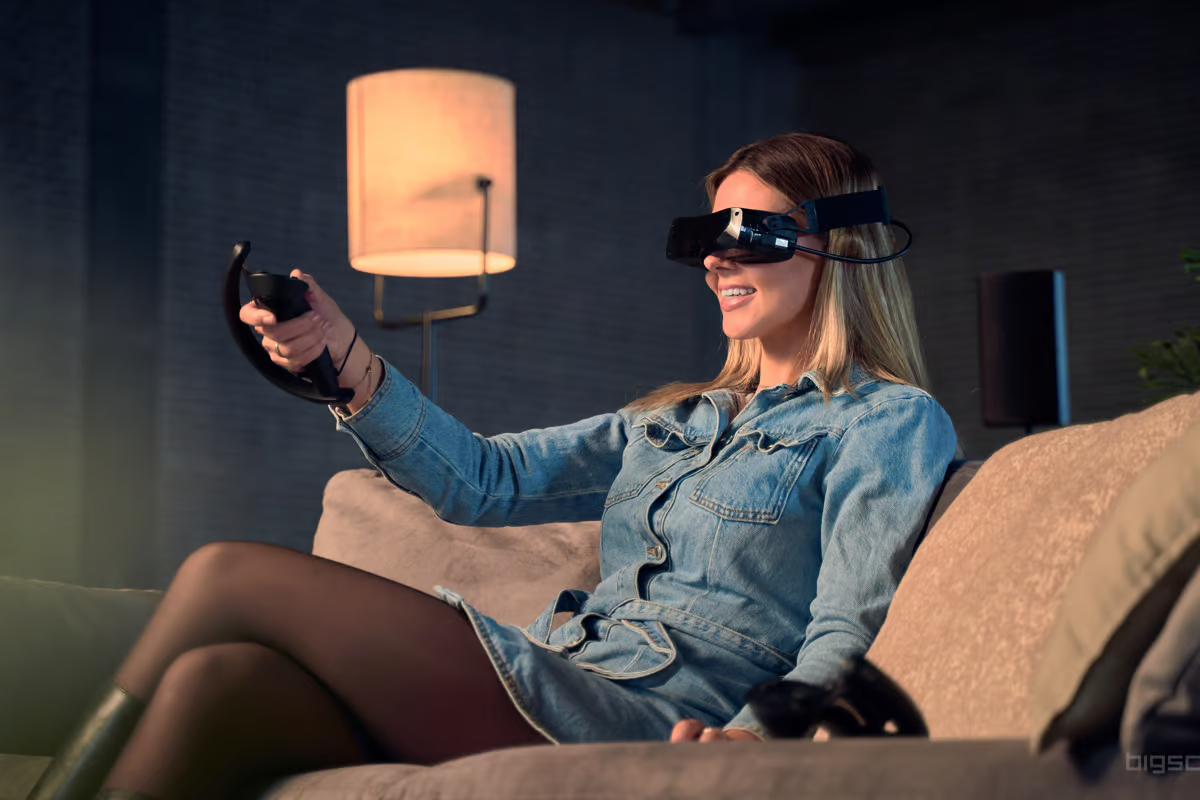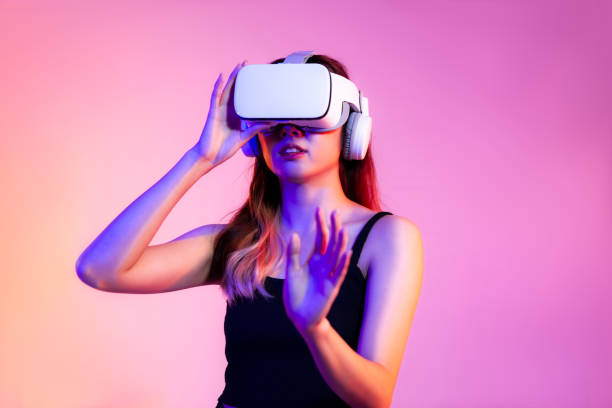
Virtual Reality Headset: The New Way to Step into the Digital World
Virtual Reality Headset: The New Way to Step into the Digital World
Virtual reality (VR) has become an incredibly exciting and revolutionary technology in recent years. With VR headsets, users are now able to immerse themselves in digital worlds that were once thought to be far beyond our reach. Whether you’re playing video games, exploring new environments, or attending virtual meetings, VR has made it all possible. As an optical expert, I’m here to dive into the world of VR headsets, their functions, and what you should know before buying one.
What Can a Virtual Reality Headset Do?
A virtual reality headset offers users a truly immersive experience by presenting 3D visuals, sounds, and, in some cases, even haptic feedback. When you put on a VR headset, you’re transported into a completely different world, where you can interact with your surroundings as if they were real. VR headsets come equipped with motion sensors, gyroscopes, and accelerometers that track the user’s head movements, allowing for a more realistic interaction with virtual environments.
Apart from entertainment, VR technology is also used in fields like education, medicine, and architecture. For example, in education, students can engage in virtual classrooms or take virtual field trips to far-off places. In medicine, VR headsets are being used to train doctors or to simulate surgeries in a safe environment. The possibilities are endless, and VR is rapidly becoming a key tool in various sectors.
Do You Need a PC for a VR Headset?
The answer depends on the type of VR headset you’re using. Some VR headsets require a PC to function, while others are standalone devices.
- PC VR Headsets: These types of VR headsets need to be connected to a powerful PC with high-end specifications, such as a fast graphics card and sufficient RAM. The PC renders the graphics and sends them to the headset, allowing for high-quality visuals and smooth experiences. Popular PC VR headsets include the Oculus Rift, HTC Vive, and Valve Index.
- Standalone VR Headsets: These VR headsets don’t require a PC or external device to function. They come with built-in processors and storage, allowing them to work independently. Examples of standalone VR headsets include the Oculus Quest and the Oculus Quest 2.
While standalone headsets are more convenient and portable, they may not offer the same graphical quality or processing power as their PC-connected counterparts. However, for casual users or those who prefer ease of use, standalone VR headsets are a great choice.
Are VR Headsets Safe?
Yes, VR headsets are generally safe to use, but there are a few things you should keep in mind to ensure a safe experience. First and foremost, always make sure your VR setup is in a safe space. Since VR can completely immerse you in a virtual world, it’s easy to lose track of your surroundings. Clear the area of obstacles, and if possible, set up a designated play area.
Additionally, it’s important to take regular breaks when using VR. Extended use of a VR headset can cause eye strain, headaches, or dizziness. Experts recommend taking a 10-15 minute break every 30 minutes of VR use. This is especially important for younger users, as their eyes are still developing.
Also, some people may experience motion sickness or discomfort due to the virtual world’s visual cues not matching their physical movements. If you’re prone to motion sickness, consider starting with shorter sessions and gradually increasing your time in VR.

What Should I Know Before Buying a VR Headset?
Before buying a VR headset, there are a few key factors to consider to ensure you make an informed decision:
- Compatibility: Ensure that the VR headset is compatible with your devices. If you plan to use a PC VR headset, make sure your PC meets the required specifications. If you’re going for a standalone VR headset, check if it supports the apps and games you want to use.
- Resolution: The resolution of the VR headset plays a big role in the visual quality of your experience. Higher resolution means clearer and more detailed visuals, but it may also demand more from your device (especially for PC VR headsets).
- Comfort: Since VR headsets are worn on the head, comfort is a crucial factor. Look for headsets with adjustable straps, padding, and a design that balances the weight across your head. Comfortable VR headsets will help you have longer and more enjoyable sessions.
- Tracking and Controllers: Consider the tracking system used by the headset. Some headsets offer inside-out tracking (where the sensors on the headset track your movements), while others require external sensors. Make sure the controllers feel comfortable and offer accurate tracking for a better experience.
- Price: VR headsets come in a wide price range. High-end models like the Valve Index and HTC Vive Pro can cost upwards of $1,000, while more budget-friendly options like the Oculus Quest start around $300. Determine your budget and choose a headset that provides the best balance of features and value.
What is the Number 1 VR?
As of 2025, the Oculus Quest 2 is widely regarded as one of the best VR headsets on the market, especially considering its price-to-performance ratio. With standalone functionality, a high-resolution display, and an easy setup process, it offers an immersive experience without the need for a PC. It’s an excellent option for both beginners and experienced users alike.
For PC VR enthusiasts, the Valve Index is considered one of the top options. It offers unparalleled visual quality, precise tracking, and an excellent field of view, making it a top choice for high-end VR users.
Who Created VR?
The creation of VR technology can be traced back to the 1960s, with Morton Heilig often credited as one of the early pioneers. He created the Sensorama, a machine that combined visuals, sounds, and even scents to provide an immersive experience. However, it wasn’t until the 1990s that VR technology began to take shape with the introduction of devices like the Virtuality Group’s arcade machines.
In terms of modern VR, companies like Oculus (now owned by Facebook), HTC, and Valve have been instrumental in bringing VR to the masses with consumer-friendly devices that offer impressive graphical fidelity and immersion.
Virtual reality technology is undoubtedly one of the most exciting advancements in recent years. As VR headsets become more accessible and affordable, it’s clear that they are here to stay. Whether you’re interested in gaming, education, or simply exploring virtual worlds, VR offers an incredible new way to step into the digital realm. By understanding the capabilities, safety, and specifications of VR headsets, you can make an informed decision and dive into this new era of immersive experiences.



